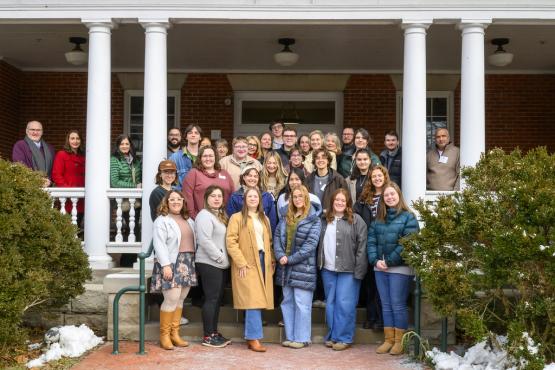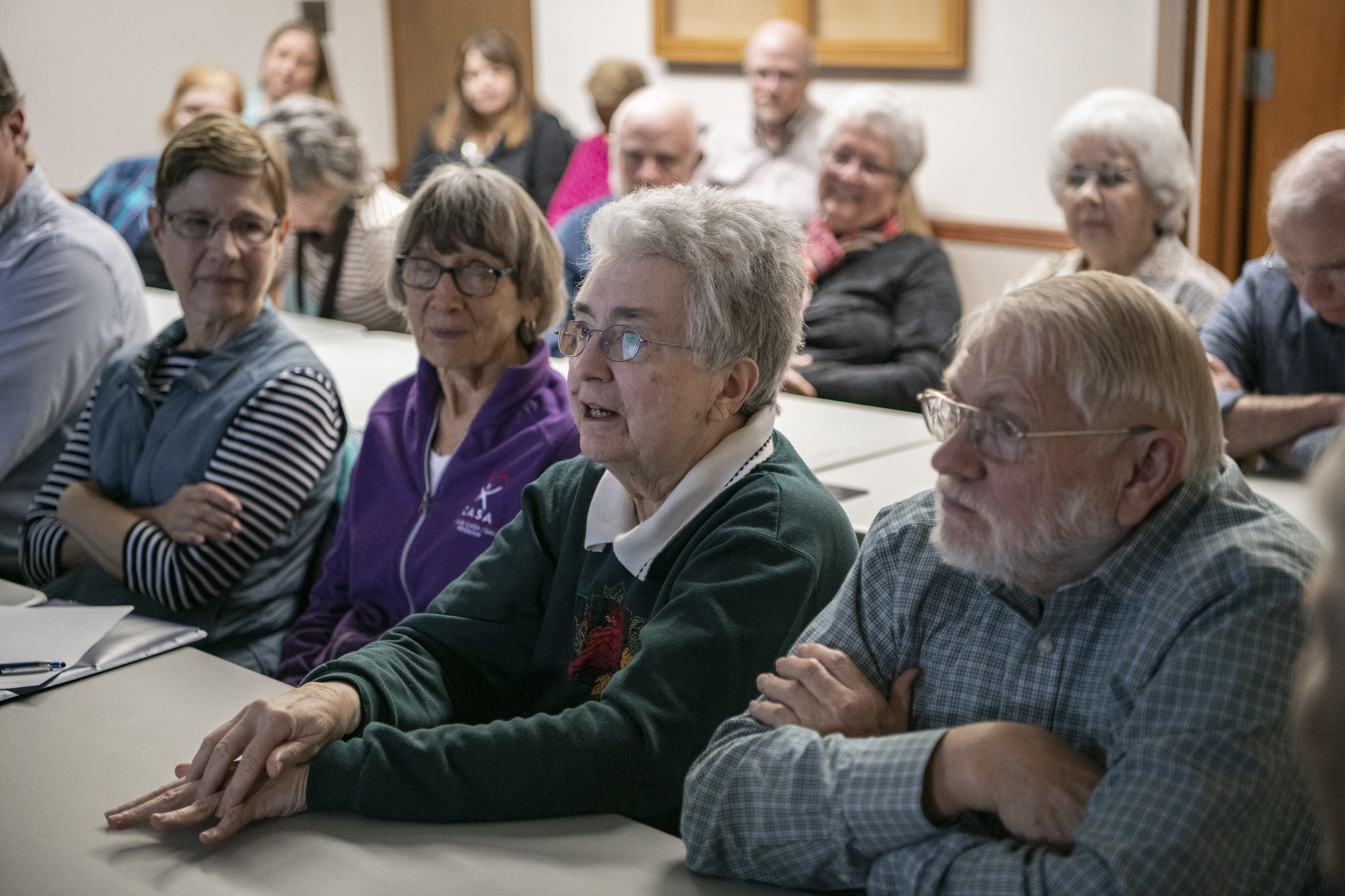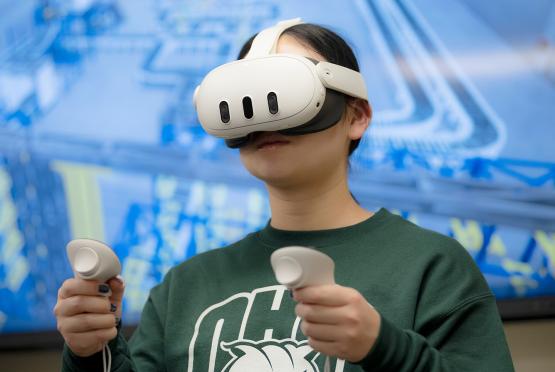
Dramatic images of destruction and people displaced by severe weather increasingly dominate our news feeds. Hurricanes, droughts, wildfires and tornadoes endanger communities across the United States and around the world; certain populations are especially vulnerable.
Geoffrey Dabelko, a professor in the Voinovich School of Leadership and Public Service, says that extreme weather conditions disproportionately endanger older adults.
Dabelko studies environmental issues like climate change, having recently served as an author on the U.S. government’s 5th National Climate Assessment. Until a fateful family dinner six years ago, he had not made the connection between his research area and gerontology. It was during a conversation with his sister Holly Dabelko-Schoeny at a family Thanksgiving that the connection become clear to them both.
Dabelko-Schoeny is a professor at the Ohio State University College of Social Work; her areas of expertise include aging adults and their caregivers. At the dinner table, she was describing her latest projects.
“[When] she started speaking about this age-friendly methodology that focused on infrastructure, transportation, health, housing, communications and social networks, I was like, ‘well, that’s the same playground that we’re working on in sustainability and climate,” Dabelko said.
The holiday conversation would eventually lead to the formation of the Grey Green Alliance (GGA), an initiative that focuses on solutions that can be both environmentally sustainable and supportive to older adult communities. The name was chosen for its double meaning with the colors representing the collaboration of both Ohio State University and Ohio University.
Universal priorities
Housing, one of the key research areas for the GGA, has proved to be a universal and pressing one for older adults.
“I learned that…no matter where in the world you ask older adults, they want to age in place, either in their own home or their own community,” Dabelko says. “They don’t want to be asked to move or be forced to move.”
That desire can align with sustainability efforts such as clustering housing, implementing more public transportation and making cities more walkable.
The GGA initiative is also dedicated to addressing the challenges of aging and climate change in rural areas.
The extreme rainfall and devastating flooding in western North Carolina from Hurricane Helene makes clear how climate super-charging extreme weather events poses stark challenges for older adults. Yet it is not only the dramatic storms or fires on the coasts or in the western part of the United States that pose real threats.
“That’s a real challenge in the places we’re talking about, where even [the] less dramatic flooding than the extreme weather events really matter for older adults in a place like Appalachia, where more routine flooding poses real barriers to get to a job or to get to a health appointment,” Dabelko said. “We’re still in the kind of the discovery phase, but we’re adding questions to community surveys here. [Like] do you have access to air conditioning in a warmer world? Have you had to miss appointments because of flooding in the last year?”
While the initiative has already conducted a lot of research on the subject, there is still much more to learn.

The Grey Green Alliance focuses on solutions that can be both environmentally sustainable and supportive to older adult communities.

Geoffrey Dabelko, a professor in the Voinovich School of Leadership and Public Service, says older adults' desire to age in place aligns with sustainability efforts like clustering housing, implementing more public transportation and making cities more walkable.
“Bringing a new perspective”
The fact that the field is still unexplored creates extensive opportunities for students eager to gain research experience. One of those students is Voinovich Research Scholar Cara Harmon, who was selected into the spring cohort for the 2024 Ohio Scholars in Aging program.
“Having the opportunity to be a scholar in aging through the Ohio Department of Aging was really special because I got to bring everything that I learned working with Grey Green Alliance and Dr. Dabelko, and bring it to the state directly,” Harmon said.
Harmon is a geography environmental pre-law major with certificates in East Asian studies and law, justice, and culture. She has been working with the Voinovich School for the past year as an undergraduate researcher.
“I definitely felt like the odd duck out in this group as everyone else had backgrounds in gerontology, but it was so special bringing a new perspective to this program that hadn't been considered before,” Harmon said.
Harmon’s research, which she presented both at the OHIO Student Expo as well as at the Ohio Association of Gerontology and Education conference, analyzed the Ohio Department of Aging’s State Plan on Aging. Her research also focused on showing room for opportunity to make the plan more climate inclusive.
Dabelko believes that students interested in addressing the twin trends of aging and climate change, and combining different studies, will have unique opportunities as the challenges persist.
“I am 100% certain that there are and there are going to be more older adults, and there is and there’s going to be more climate change,” Dabelko said. “And so both of these trends are significant and increasing. I think that students who go the extra mile to go beyond just any of those two worlds and look at and study and engage how they intersect, will be at an advantage versus those who just stay in their lanes and do one or the other.”
Bringing student voices to the table also expands the conversations around these issues, providing opportunities for both students and professional researchers to learn and grow.
“I had always had my mind set on environmental law and environmental studies, but being involved with the Grey Green Alliance showed me how important the gerontology field is,” Harmon said. “I am still unsure of my future but will always keep the work I have done with Grey Green Alliance in the back of my head.”
Expanding reach
In 2024 , Dabelko, Ohio University Environmental Studies alum Melissa Damico, and their Grey Green Alliance partners at OSU’s Age-Friendly Innovation Center published a research article in the journal The Gerontologist. The initiative is moving forward on numerous fronts. In addition to the publication and Harmon’s presentation at the Ohio Association of Gerontology and Education conference last spring, other activities including working with Age-Friendly Athens County to integrate sustainability and climate resilience, coordinating a Grey Green Alliance group for the Coalition of Age-Friendly Communities of Ohio, and collaborating with scholars and practitioners nationally and internationally. For example, Mickael Bech, a health economist from the University of Southern Denmark, is just finishing up a month-long visit to the Voinovich School advancing efforts to draw lessons learned from communities all around the world.
“Many people tell me they wouldn’t have ever thought that climate change and aging would go together, but they are two really important topics in which the academic community is starting to realize need to be addressed together,” Harmon said.
She said that seeing the data about rising temperatures, precipitation rates and the population of people over the age of 60 was a significant moment for her.
“Aging and climate change is something that is going to affect everyone, and seeing the data made me realize that this initiative should be on everyone’s agenda,” Harmon said.
Dabelko said that the Grey Green Alliance is moving forward at the state level and will involve more conversations with age friendly communities. The group is building more partnerships and conducting more research to help build an international network as well.



